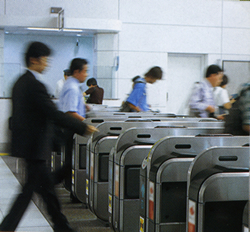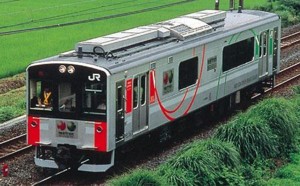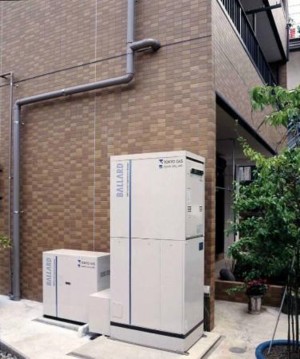 The East Japan Railway Company (JR-East), as part of research aimed at developing more environmentally friendly train stations, is testing an experimental system that produces electricity as people pass through ticket gates. JR claims that this sort of human-powered electricity generation system may provide a portion of the electricity consumed at train stations in the future.
The East Japan Railway Company (JR-East), as part of research aimed at developing more environmentally friendly train stations, is testing an experimental system that produces electricity as people pass through ticket gates. JR claims that this sort of human-powered electricity generation system may provide a portion of the electricity consumed at train stations in the future.
The ticket gate electricity generation system relies on a series of piezo elements embedded in the floor under the ticket gates, which generate electricity from the pressure and vibration they receive as people step on them. When combined with high-efficiency storage systems, the ticket gate generators can serve as a clean source of supplementary power for the train stations. Busy train stations (and those with large numbers of passengers willing to bounce heavily through the gates) will be able to accumulate a relatively large amount of electricity.
JR-East, who worked with Keio University to develop the system, claims that in addition to being put to use as an independent power supply that does not require hardwiring, the system can also be used as a way of measuring the traffic flow through ticket gates.
The system is being tested at the JR-East head office in Shibuya, where it is installed at the entrance to the reception area on the 4th floor. As visitors pass through the gate, a lamp lights up, signifying that electricity has been produced. Testing of the system will continue until August 11.
[Source: Chunichi Shimbun via /.Japan]


 On April 4, the
On April 4, the 
 Outcrops of combustible ice, or
Outcrops of combustible ice, or